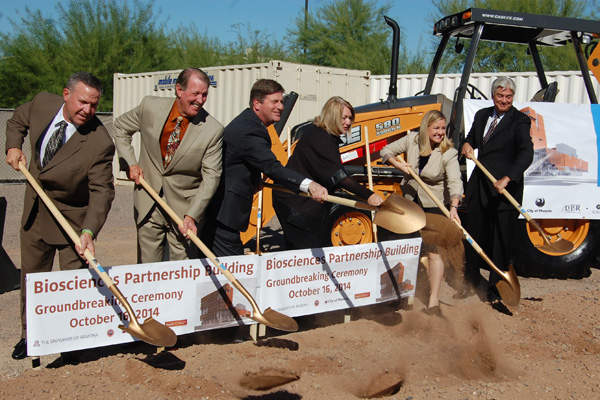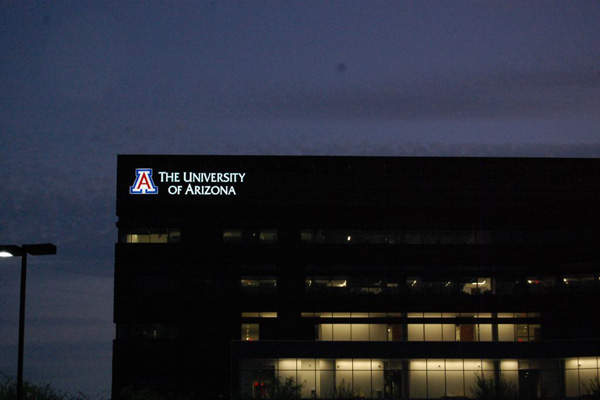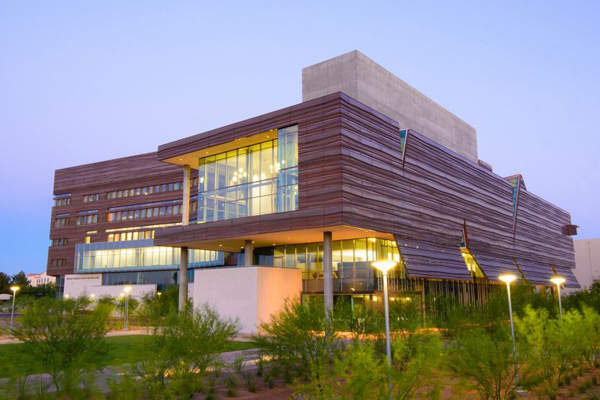In October 2014, the University of Arizona (UA) College of Medicine in Phoenix, Arizona, broke ground on the Biosciences Partnership Building research facility.
The Biosciences Partnership Building is located on the Phoenix Biomedical Campus, a major bioresearch and education hub in downtown Phoenix.
Construction of the research building, located immediately north of the UA’s existing Health Sciences Education building in Phoenix Biomedical Campus, near 7th Street and Fillmore, was completed in early 2017.
The construction was sponsored by the UA and the city of Phoenix. The building was designed for biomedical research and includes laboratory facilities for scientists to conduct research into partnerships with industries on key medical areas such as neuroscience, cardiovascular and thoracic science.
The project created 500 jobs during construction and currently employs 360 permanent staff.
Biosciences Partnership Building project details
The facility is said to be the pharmaceutical industry’s first antibiotic-free and animal-free cell culture media and supplements manufacturing facility.
Construction of the biosciences building was approved by the Arizona Legislature’s Joint Committee on Capital Review in 2010.
The ten-storey, 245,000ft² building is intended to expand the UA Medical Campus’ research facilities and pave the way for innovative therapeutic discoveries to improve lives. Research at the facility will focus on neurosciences, healthcare outcomes, cancer and precision medicine.
The research facility employs faculty who will teach the next generation of health professionals. It will create jobs in research and provide opportunities for specialised technicians and other support staff.
The Biosciences Partnership Building is part of a larger expansion project taking place at the Phoenix Biomedical Campus.
In 2012, the Health Sciences Education Building was opened at the campus. In 2015, a 220,000ft² cancer centre was opened at Dignity Health St Joseph’s.
The Phoenix Biomedical Campus currently houses four health science colleges, including the Mel and Enid Zuckerman College of Public Health and colleges for nursing and pharmacy.
Arizona State University’s School of Nutrition and Health Innovation is located in the Arizona Biomedical Collaborative I building. Plans are in place to build another building between the Arizona Biosciences College (ABCI) and Translational Genomics Research Institute.
Financing for the Biosciences Partnership Building
The Biosciences Partnership Building’s construction has required a $136m total investment. The funding has come from the stimulus plan for Economic and Educational Development bonds approved by the Arizona legislature in 2008, for the construction of the Health Sciences Education Building and campus improvements.
Contractors involved in the project
California-based CO Architects and Ayers Saint Gross of Phoenix designed the biosciences building. A joint venture of DPR Construction and Sundt Construction is the construction manager for the project.
Phoenix Biomedical Campus (PBC) development and sustainability
The aim of the state of Arizona and city of Phoenix is to develop PBC as a major biosciences hub and premier academic health centre in the region. Once fully developed, the campus will create an economic impact of up to $2bn a year.
Including the Biosciences Partnership Building, the PBC is spread across 28 acres, encompassing several bioscience and education projects. Plans are in place for the construction of more than six million square feet of biomedical-related research, academic and clinical facilities.
PBC follows the environmental sustainability policies set by the UA and Northern Arizona University (NAU). An internal team, known as the PBC Green Team, was formed in August 2009 to understand local sustainability practices, define the framework for a campus sustainability plan, periodically assess sustainability efforts on the campus, and suggest improvements and initiatives.
Sustainability initiatives adopted on the campus include the recycling of light ballasts, paper, cardboard, glass bottles and aluminium cans, the use of sustainability products, energy-efficient fixtures and systems, and waste reduction programmes.







